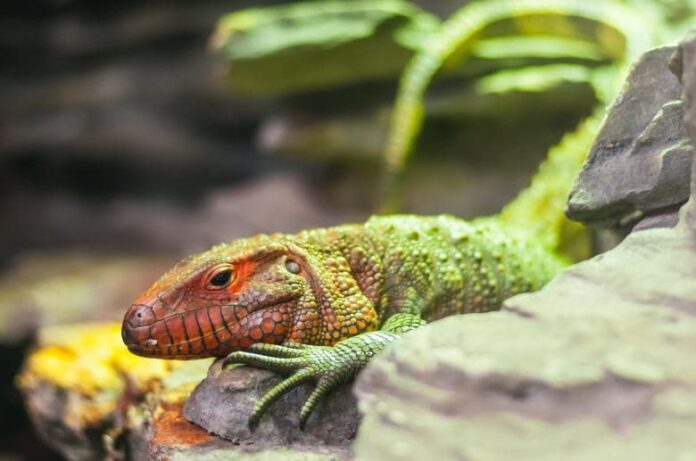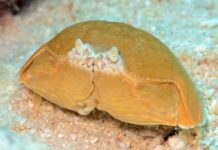Who knows that a lizard can have a build like this and look like his? A Caiman lizard is a very unique-looking lizard species that is absolutely different from the rest of the family. This is one of the reasons why people should know more about them. Some even have them as pets, so let’s see if a Caiman lizard is something that you like.
1Appearance
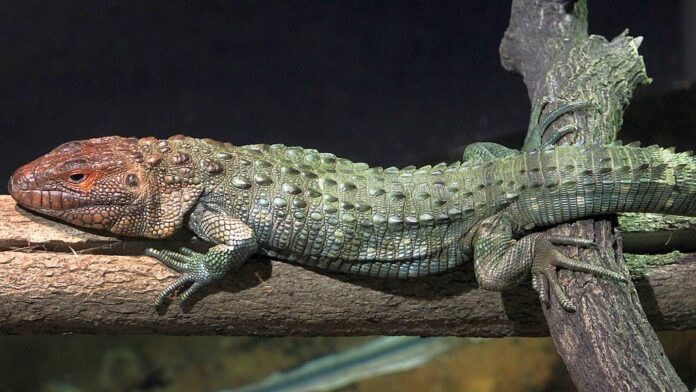
By the look, you can already tell that the appearance of the Caiman lizard resembles a Caiman crocodile a lot. A Caiman lizard has a very stout and heavyset body along with short but powerful limbs. The head of the lizard is bulky, and it is either red or orange in color. If you look closely, you can tell that the jaws are very muscular which is very helpful for their feeding habits. As for the tail, it is flat and long which is very similar to that of a Caiman crocodile. This tail is so important as it aids the reptile in diving and swimming.
The overall color of a Caiman lizard is usually bright green with slight dark green banding. Depending on where they come from, the coloration can be different; either brighter or darker. Another interesting part is the bony scales and tough raised scutes along the dorsal portion of their backs. These scales scutes give them even more resemblance to Caiman crocodiles; hence the name. As a mini version, a Caiman lizard can grow to only around 1.2 meters long.
2Behavior
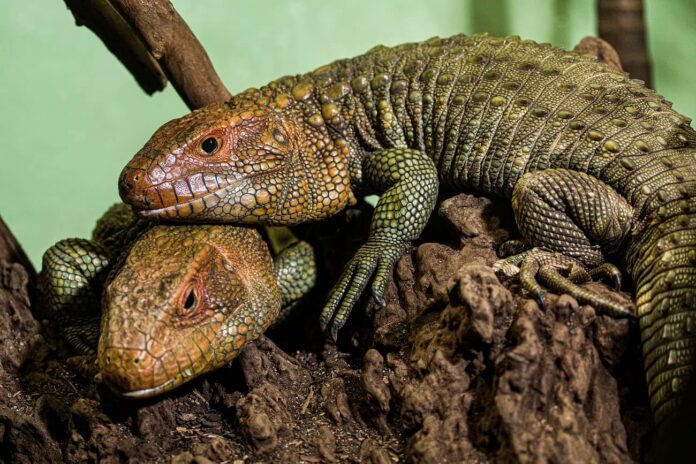
Caiman lizards are semiaquatic so they spend their time both in water and on land; usually more in water. Since they spend a lot of time in water, these lizards also have third eyelids that allow them to see underwater. During the night, they hide and sleep in bushes or trees to avoid predators and other threats. They are neither social nor solitary as they can thrive on their own and can harmoniously live with other lizards. Caiman lizards are easygoing and non-aggressive which is why they are among the favorite pets among animal enthusiasts.
More than that, Caiman lizards also often bask on branches that overhang the water which means they are excellent climbers. Some of their most common predators are crocodiles, green anacondas, jaguars, and snakes. When threatened, these reptiles like to avoid the fights so they will drop into the water and swim away. However, they can also whip their tails around and deliver painful bites if they need to.
3Feeding & Habitats
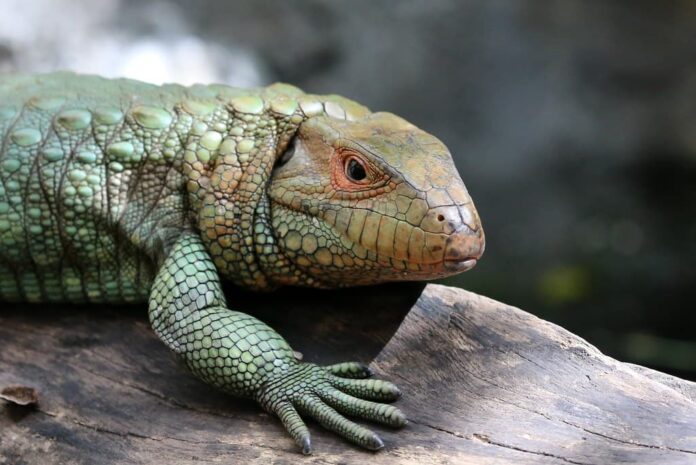
Just like many reptiles out there, Caiman lizards locate their prey by using their forked tongues. Their powerful jaws and short rounded teeth allow them to crush tough meals such as snails very easily. Caiman lizards are carnivorous so they feed primarily on invertebrates such as crawfish, freshwater clams, and river turtles. Along with that, they also eat amphibians, crabs, fish, insects, and rodents. When it catches its prey, it will raise its head to move the meal into the back of its jaws. Then it will crush the meal with its powerful back teeth to break the shell and eat the soft parts.
The common range of the Caiman lizards is in South America, mostly in Bolivia, Brazil, Columbia, Ecuador, Paraguay, and Peru. Their favorite habitats are flooded forests, flooded woodlands, marshes, savannas, and streams. For years, they have been facing environmental threats from deforestation and human pollution that cause habitat loss. In the past, people also hunted them for their skin and pet trade as well. The good thing is that they are in the Least Concert category on the IUCN Red List.
Related Post: Things You Don’t Know About Blue-Crested Lizards

